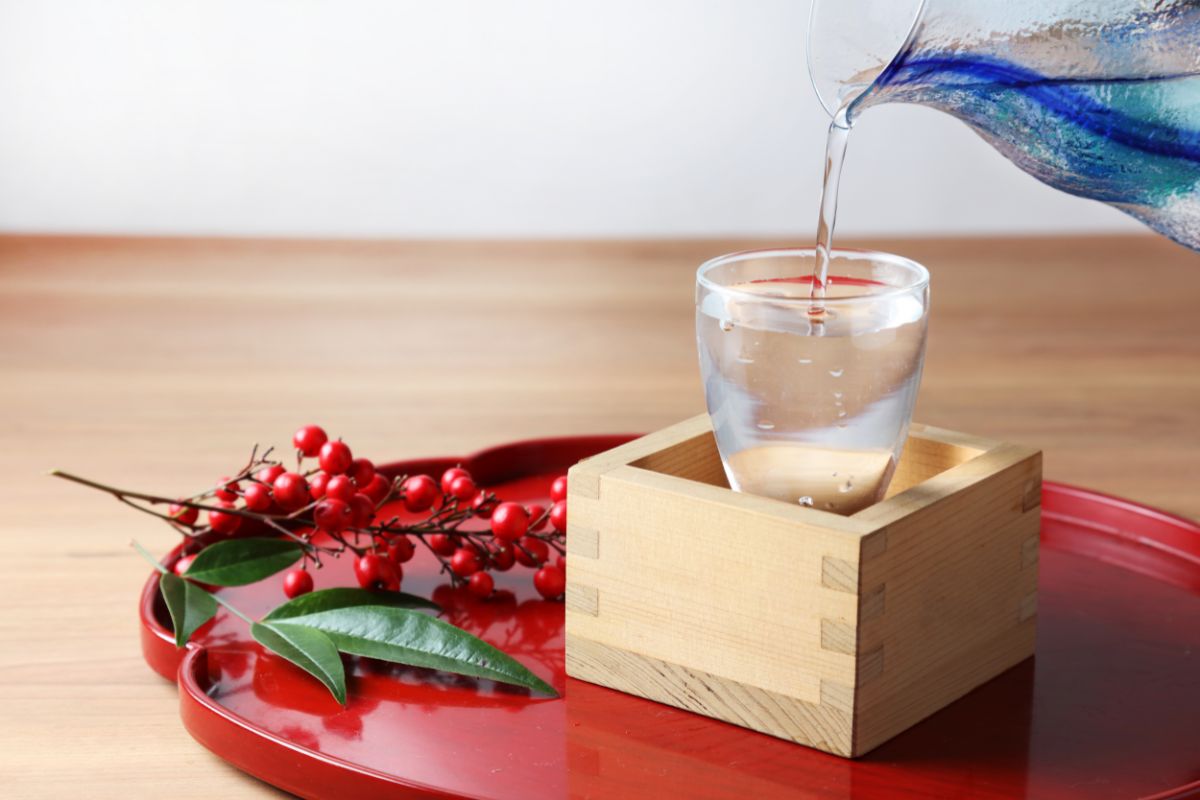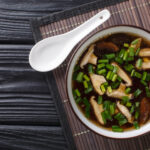Are you wondering what sake tastes like? Japanese Cuisine features some of the most creative and impressive dishes in the world.
From delicate sushi to artisanal desserts, the attention to detail, color, and taste is something that you can’t get anywhere else. Whilst a lot is known about Japanese Food in the western world, people know a lot less about beverages.

Sake is probably the most famous beverage to come out of Japan, and in recent years it has exploded in popularity in the west.
It pairs with a large selection of different food, and is fairly mild to drink, especially if consumed in the right amounts. You’ve probably heard of it – but if you’ve never tried it before you’re likely to have some questions.
What does sake taste like, is it something you’ll like? If you’re wondering about this question, you’ve come to the right place.
In this article, we’re going to give you a comprehensive overview of everything to do with sake. Including what it is, what food it pairs well with, and what it tastes like.
We’ve also included a short FAQ to clear up any additional questions you may have.
What Is Sake?
Sake is an alcoholic drink that is made from a base of fermented rice (to learn more about drinking sake, read here). It’s been a staple of Japanese culture for over 2500 years and is often an accompaniment to food.
It’s also called “Rice Wine” and is most similar to spirits consumed within the western world, but despite the process that’s used to make it is far closer to something like beer.
There’s no obvious origin of Sake, but the first record of it is within the Record of The Three Kingdoms from China (written in the 3rd century).
Sake was often gifted or served within traditional flasks, and this practice remains in some parts of Japan today. The average calorie content of sake is around 134 calories per 100 grams.
How Is Sake Made?
Sake isn’t made from classic cooking rice, but a special type of rice. Sake Rice is particularly translucent and is created through a specific process. First, the rice is thoroughly washed and then cooked with steam.
It is then combined with yeast and koji (a type of rice that has been cultivated with a mold).
This combination then ferments in a process known as ‘Shikomi,’ which then sits for a long period of time (upwards of 18 days), before being pressed, filtered additional times, and finally blended.
Modern methods of creating sake can massively vary, and there are a lot of different steps you can take within the process to make unique flavors!
What Does Sake Taste Like?
So now we get to the root of our question. The taste of sake is difficult to explain if you’ve never had it before, and it is fairly unique.
Perhaps the best way to describe it is as a fairly mild, sweet, and clear drink that balances a few subtle flavors fairly well.
If you’ve ever drank something like vodka before, you may be pleased to know that sake is much milder in flavor and strength.
Sake typically has a rich body that comes as a result of its high contents of glutamic acid. In many ways, you can think of the texture as similar to beer, with some of the flavors, but with a much lighter taste that you’re likely to find in a spirit.
One of the problems with describing what sake tastes like is the sheer variety of different types. Sake brands tend to differ in either sweetness or dryness.
If you get authentic sake, the levels of these two different flavors are usually measured with something called ‘nihonshudo,’ a score that allows you to see the level of density of the beverage you’re holding.
Types Of Sake
There are a lot of different types of sake. That 2500 tradition has made all different types of flavors and strengths, and in this section we’re going to break these down for you.
- Futushu Sake – Futushu Sake is one of the most popular kinds of sake in japan. It is well known for its earthy, rice-based flavor.
- Honjozo Sake – if you’re looking for something with a lower alcohol content, Honjozo sake is a great pick. It is widely consumed by people who want something light with a meal.
- Nigori Sake – this can be translated quite literally into ‘cloudy sake,’ and is known for its thick, creamy texture and marble-white coloring.
- Shiboritate Sake – a type of sake that has a much sweeter and fruity flavor. It’s most similar to something like white wine or champagne (without the fizz).
- Ginjo Sake – this is a high-quality type of sake that is created with rice that has been polished to 60%. It typically comes out as a fruity and light flavor. Unlike other sake it is sometimes served chilled.
Final Thoughts
So there you have it. Trying to pinpoint the exact taste of sake can be difficult, because it depends on the type of sake that you’ve chosen.
We hope that this article has given you some insight into the world of sake, and that you now feel a lot more confident about trying it out.
For a more indepth look at sake, check out these websites here for europe and here for US. Also be sure to check out our short FAQ below.
Frequently Asked Questions
What Is The Best Sake To Start With?
Generally, we would suggest starting with Dassai 45. It’s a 16% alcohol sake that is fairly mild with slightly honeydew melon aromas for a fruity taste.
Dassai is very popular and usually available worldwide. This is probably a good one to begin with because it will give you an authentic sake flavor, without some of the more powerful aspects of the beverage.
Why Are Traditional Sake Cups So Small?
The reason why sake cups are so small goes back to earlier Japanese culture.
It’s customary for the host to pour your sake for you, and with the cup being so small, they can constantly fill it back up for you, showing respect and honor for you as a guest.
If you enjoyed this post, you might enjoy our article on ‘How To Make Ramen From Naruto‘.
- 16 Best Websites To Watch Japanese Movies With English Subtitles - May 11, 2023
- Is ZIPAIR The Best Airline For Traveling To Japan? - May 11, 2023
- Ryu Murakami Vs Haruki Murakami – Which One Should You Read? - May 11, 2023





![How Many Types Of Sushi Are There? [Definitive Guide] How Many Types Of Sushi Are There? [Definitive Guide]](https://justaboutjapan.com/wp-content/uploads/2023/05/How-Many-Types-Of-Sushi-Are-There-Definitive-Guide-150x150.jpg)
